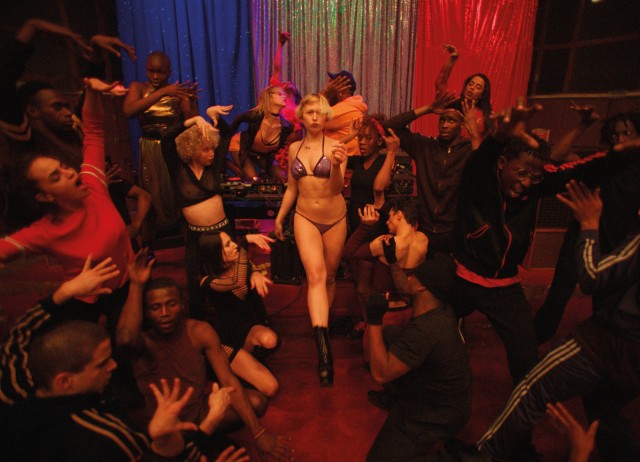Gaspar Noé’s “Climax” is a wild roller coaster ride of sex, drugs and techno.
The French filmmaker’s latest movie follows the supposedly true story of a French dance troupe practicing for a tour at a remote boarding school in the 1990s. In celebration of a successful rehearsal, the dance practice transforms into a lively party until the dancers realize their sangria is spiked with LSD. After a descent into drug-induced insanity, accusations turn into violence as they attempt to determine which member of the group laced the drinks. “Climax” can be emotionally overwhelming, but the stunning visuals and nonstop action make for an electrifying experience.
The story begins in the aftermath of the party with a bird’s-eye shot of the boarding school and its surrounding environment. The stark white landscape is tainted with the bloodied body of an individual crawling through the snow. The quietly tragic snapshot clues the audience into the cold world the dancers live in. It shows just enough to establish the film’s brutality and pique interest without throwing too much gore at the audience all at once.
[RELATED: Movie review: ‘Ashes in the Snow’ lingers on the surface, failing to evoke sympathy or meaning]
The gruesome sequence is then met with a warmth completely antithetical to the preceding scene. A feeling of nostalgia is evoked by a shot of a television contemporary to the period playing audition tapes of the dancers. The television is nestled between two bookshelves that include VHS tapes of classic horror films like “Possession” and “Suspiria.” The tapes are fun Easter eggs for film fanatics, cluing them into the potential influences that affected Noé’s direction for “Climax.”
From the very first glimpse into the dance rehearsal, the film utilizes engaging dance sequences supported by an upbeat soundtrack. The diverse group of dancers confidently strut to the relentless pulsations of techno music. Including music by Thomas Bangalter of Daft Punk, the soundtrack is a perfect complement to the film’s frenzied aesthetic.
From voguing to krumping to normally bone-breaking contortion, each dancer’s moves and style is brought to the choreography. Because the dance troupe is mostly made up of street dancers rather than professional actors, the scenes feel more stylistically sound and authentic than they otherwise would have. The scenes also display Noé’s breathtaking skill in directing surreal, fantastical films. His directing is carefully crafted, and the cinematography feels natural. Rather than impose on the experienced dancers, the camera gracefully navigates the floor, weaving among the performers as if it, too, were involved in a choreographed dance.
Noé hasn’t been one to shy away from disturbing imagery and graphic depictions of violence and sex. “Climax” is no exception. Scenes of self-mutilation, drug-induced sex and a woman’s hair catching on fire are just some of the film’s highlights. Since the film clocks in at just over an hour and a half, the audience isn’t overly inundated with the troubling material. But by the end of the film, the explicit scenes become a thing of beauty. The rotating camera is framed close-up on the indistinguishable acts to an almost nauseating degree. It was a bold move – but it was so satisfying.
Despite the hysteria of the film, “Climax” is beautifully twisted due to its outrageous narrative and breathtaking direction and cinematography – thanks to Noé and the film’s cinematographer Benoît Debie. Although some may criticize the film for capitalizing on “cheap” shock value, its ability to garner genuinely visceral reactions is instead a testament to its effectiveness.
Noé pushes buttons and if you can make it through the whole film, it’ll plague your mind for days. Maybe that’s not such a bad thing.



